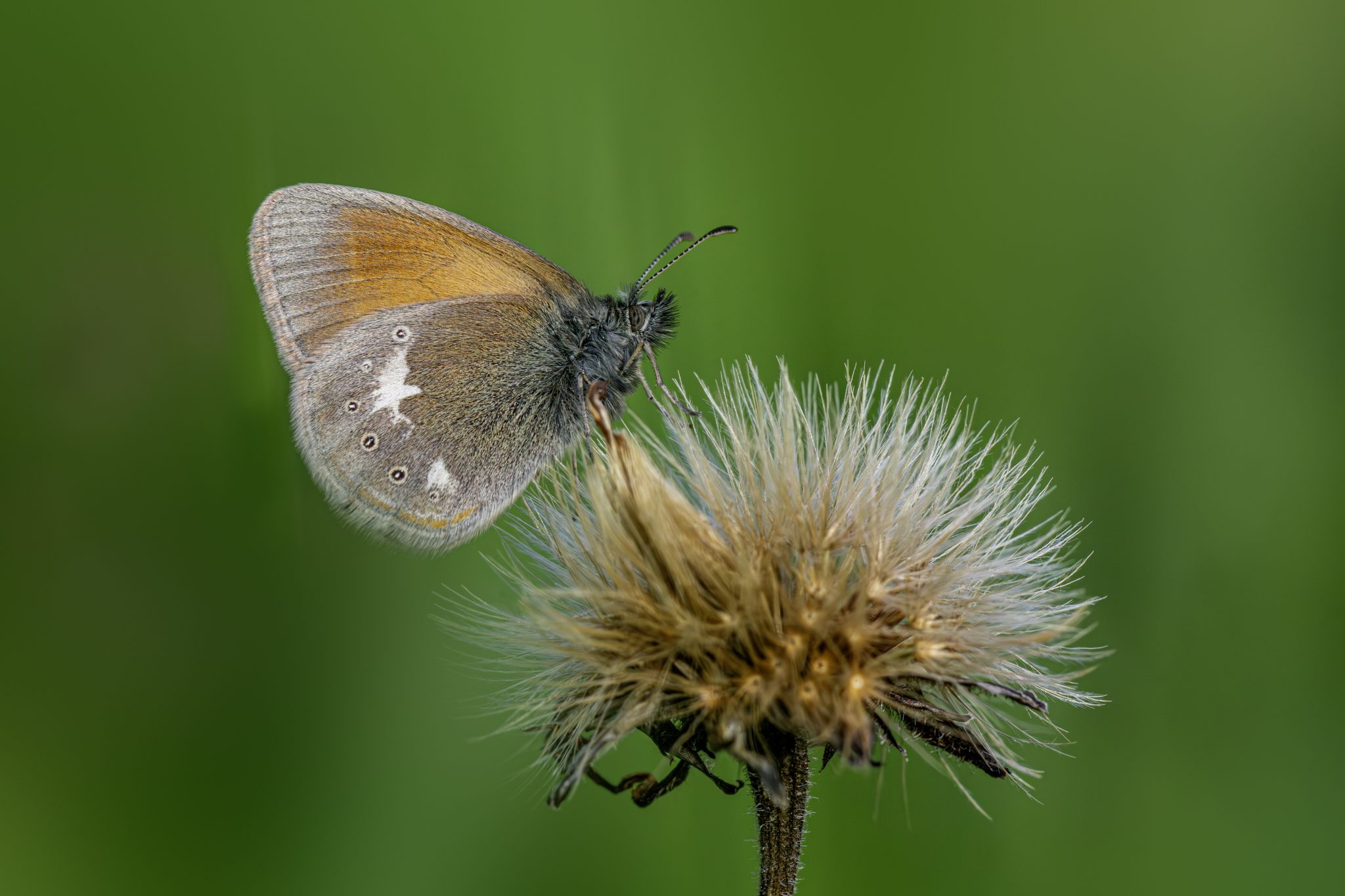Here’s a full natural history overview of the Chestnut Heath (Coenonympha glycerion) — a delicate, warm-toned butterfly of European meadows and forest edges. 🦋
🦋 Chestnut Heath (Coenonympha glycerion)
Scientific name: Coenonympha glycerion (Borkhausen, 1788)
Common name: Chestnut Heath
Family: Nymphalidae
Subfamily: Satyrinae (the Browns)
Genus: Coenonympha
🌍 General Overview
The Chestnut Heath is a small, grassland butterfly found across temperate Europe and western Asia.
It favors warm, dry meadows, forest clearings, and grassy slopes — especially where patches of shrubs and flowers provide shelter and nectar.
It’s one of several Coenonympha species, known for their earthy colors and low, fluttering flight close to the ground.
🧬 Identification
| Feature | Description |
|---|---|
| Wingspan: | 32–38 mm |
| Upperside: | Dark brown with faint orange patches; often appears uniform in flight |
| Underside (hindwing): | Chestnut-brown with a pale band and a row of small white-ringed black eyespots |
| Forewing underside: | Warm orange with pale edge |
| Sexes: | Similar; females slightly paler with more distinct eyespots |
| Flight style: | Weak, low, fluttering flight near vegetation |
Key distinction:
The Chestnut Heath can be told apart from the Small Heath (Coenonympha pamphilus) by its darker tone, larger size, and well-defined row of eyespots on the hindwing underside.
🌿 Habitat
- Prefers sunny, dry to moderately moist meadows with tall grasses.
- Common in forest edges, clearings, and bush-covered slopes.
- Avoids heavily grazed or intensively managed grasslands.
- Found from lowlands up to 1,800 m in mountain regions.
🪺 Life Cycle
| Stage | Timing | Description |
|---|---|---|
| Flight period: | June–August (one generation per year) | |
| Eggs: | Laid singly on grasses | |
| Larvae (caterpillars): | Green with pale stripes, feeding on various grass species | |
| Host plants: | Mainly grasses — Brachypodium pinnatum, Festuca, Dactylis glomerata, Poa spp. | |
| Overwintering stage: | Larva (partially grown caterpillar) | |
| Pupation: | In a loose silk shelter near the ground |
🍽️ Feeding
- Adults: Feed on nectar from thistles, clovers, knapweeds, and other meadow flowers.
- Larvae: Feed on fine-leaved grasses near the base of vegetation.
🧭 Distribution
- Geographic range:
Widespread across central and eastern Europe, southern Scandinavia, and parts of western Asia.
Absent from much of the Iberian Peninsula, northern Britain, and the far north. - In Estonia: Locally common in southern and central regions, in warm grasslands and forest glades.
📉 Conservation Status
| Category | Details |
|---|---|
| IUCN Red List (Europe): | Least Concern |
| Population trend: | Stable, though declining locally due to habitat loss |
| Main threats: | Meadow drainage, intensive agriculture, overgrazing, forest overgrowth |
| Conservation actions: | Preservation of flower-rich grasslands and open forest edges |
🔍 Similar Species
| Species | Distinguishing features |
|---|---|
| Small Heath (C. pamphilus) | Smaller, paler, with single eyespot on hindwing underside |
| Pearl-bordered Heath (C. hero) | More pronounced white band and larger eyespots |
| Pale Heath (C. arcania) | More orange upperside and distinct silvery underside band |
🪶 Interesting Facts
- Named “Chestnut Heath” for its chestnut-brown hindwing color.
- Males are often seen patrolling low over grass in search of females.
- Prefers undisturbed traditional meadows, which makes it sensitive to modern land-use changes.
- Acts as an indicator species for biodiversity-rich grasslands.
📊 Summary Table
| Trait | Description |
|---|---|
| Scientific name | Coenonympha glycerion |
| Common name | Chestnut Heath |
| Family | Nymphalidae |
| Wingspan | 32–38 mm |
| Coloration | Brown and chestnut with eyespots below |
| Habitat | Dry meadows, forest edges, grassy slopes |
| Flight time | June–August |
| Larval host plants | Grasses (Festuca, Brachypodium, Poa) |
| Overwintering | As larva |
| Distribution | Central & Eastern Europe, W. Asia |
| Conservation status | Least Concern |
Views: 234
Subscribe to the newsletter:
